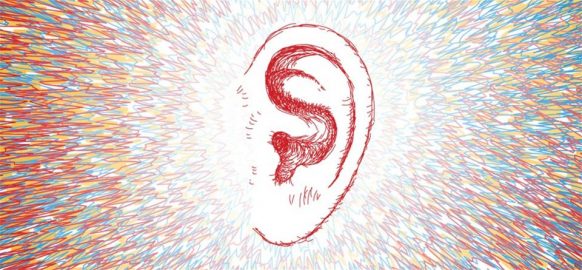Listening, Learning and Leadership: A Prescription for Excellent Patient Care

Article by Joan Lowery, M.Ed. and published in the American Association for Physician Leadership’s online medical library: 10/06/2016.
When it comes to communication skills, common sense is sometimes not common practice. In my experience as a communication skills trainer and coach, this is especially accurate when it comes to listening. Thankfully, this core skill is now recognized as integral to delivering safe, high quality, patient-centered care in an increasingly team-based, interprofessional environment.
The September 2015 Institute of Medicine report Improving Diagnosis in Health Care targeted listening as a too-often ignored, yet highly critical determinant in ensuring patient safety and quality care. According to the report, “Improving diagnosis will require collaboration and a widespread commitment to change among health care professionals, health care organizations, patients and their families, researchers and policy makers.” The report underscored listening to patients, their families and the interprofessional health care team as crucial to formulating accurate diagnoses.
According to research by Leana Wen, MD, 80 percent of clinical diagnoses can be made without any tests ― by carefully listening to the patient’s story. This is not a new idea. In 1904, Sir William Osler, called the father of modern medicine, advised physicians, “Listen to the patient, he is telling you the diagnosis.”
So, why isn’t listening given high priority in the training of physicians ― from medical school through residency? Why aren’t seasoned doctors and physician leaders given advanced training and refreshers in this essential communication skill? How has it come to pass that listening has not been treated as critically important to formulating an accurate diagnosis; to better understanding patients; to building the empathy, trust and rapport necessary to achieve desired patient outcomes?
Perhaps the answer lies outside medicine, in a society and educational system that has not made learning how to listen effectively a priority. Unfortunately, while listening is the first learned (in our mothers’ wombs) and most-used skill, it is the least studied and mastered. The vast majority of people never receive any formal active listening training. Instead, most of us learn how to listen through our families and early life experiences. We develop habitual listening barriers such as judging, criticizing, interrupting, impatience, premature problem
solving and other behaviors that compromise our ability to truly hear and understand what others are communicating.
So, what is active listening? It is an ages-old approach to listening that puts this intention first: Seek first to understand what the speaker is communicating.
Active listening uses three core skills:
- Paraphrasing, or restating, what you heard in your own words to make
sure that you fully understood what the person said. - Asking clarifying questions to better understand the speaker and to
perhaps delve more deeply. - Summarizing periodically, and at the end of conversations, to make sure
that you are “on the same page” as the speaker in your understanding.
The primary goal of active listening is to seek to understand the other person in an open-minded way, thus avoiding any chances for misunderstanding and mishaps. It is the elixir for building empathy, the well-documented quality that facilitates achieving desired medical
outcomes such as lowering A1C, blood pressure and LDL and optimizing patient adherence to treatment protocols.
In the context of medicine, we must add a fourth core skill, that of teach back. By asking your patients or colleagues to paraphrase (teach back) their understanding of your discussion, you can ensure that there is mutual understanding and clear up any misunderstandings that could get in the way of achieving desired medical outcomes.
So, back to those pesky, habitual barriers that impede our listening. It is critical to explore what goes on “behind the curtain” when we listen to others. What is distracting you ― consciously or unconsciously ― while in the process of listening? What barriers are you putting up that might get in the way of understanding what the speaker is trying to communicate?
Are you judging the speaker? Are you eagerly waiting your turn to speak or focusing on what you might say next? Are you feeling impatient and completing the speaker’s sentences? Are you distracted by the EHR, your beeper or thoughts about what’s for lunch or what you like, or don’t like, in this person? In short, so much is typically going on when we think we’re listening that it’s very hard to get beyond the noise in our heads to truly hear what that person is trying to tell us!
Becoming a physician and a leader who listens well requires self-awareness, self-reflection, commitment and practice. It is, perhaps, the ultimate mindfulness exercise as the essence of listening is being fully present to another human being. It is true that habits are challenging to break, however, the results will be greater understanding, connection and rapport with patients and the health care team and a heightened capacity to diagnose accurately and communicate in a manner that strengthens patient adherence and optimizes medical results.
Joan Lowery, M.Ed., is a communications skills trainer and coach specializing in healthcare.
Tags: Listening and Patient CareCategories
- Full-Day PSC Programs (5)
- Mini PSC Programs (4)
- One-On-One PSC Programs (2)
- Resources (12)
- Articles (12)
- Training Programs (16)
Archives
- March 2021 (2)
- October 2020 (2)
- November 2017 (2)
- October 2016 (1)
- April 2016 (1)
- February 2016 (1)
- June 2015 (1)
- March 2015 (1)
- February 2015 (2)
- December 2013 (23)
- September 2013 (3)
